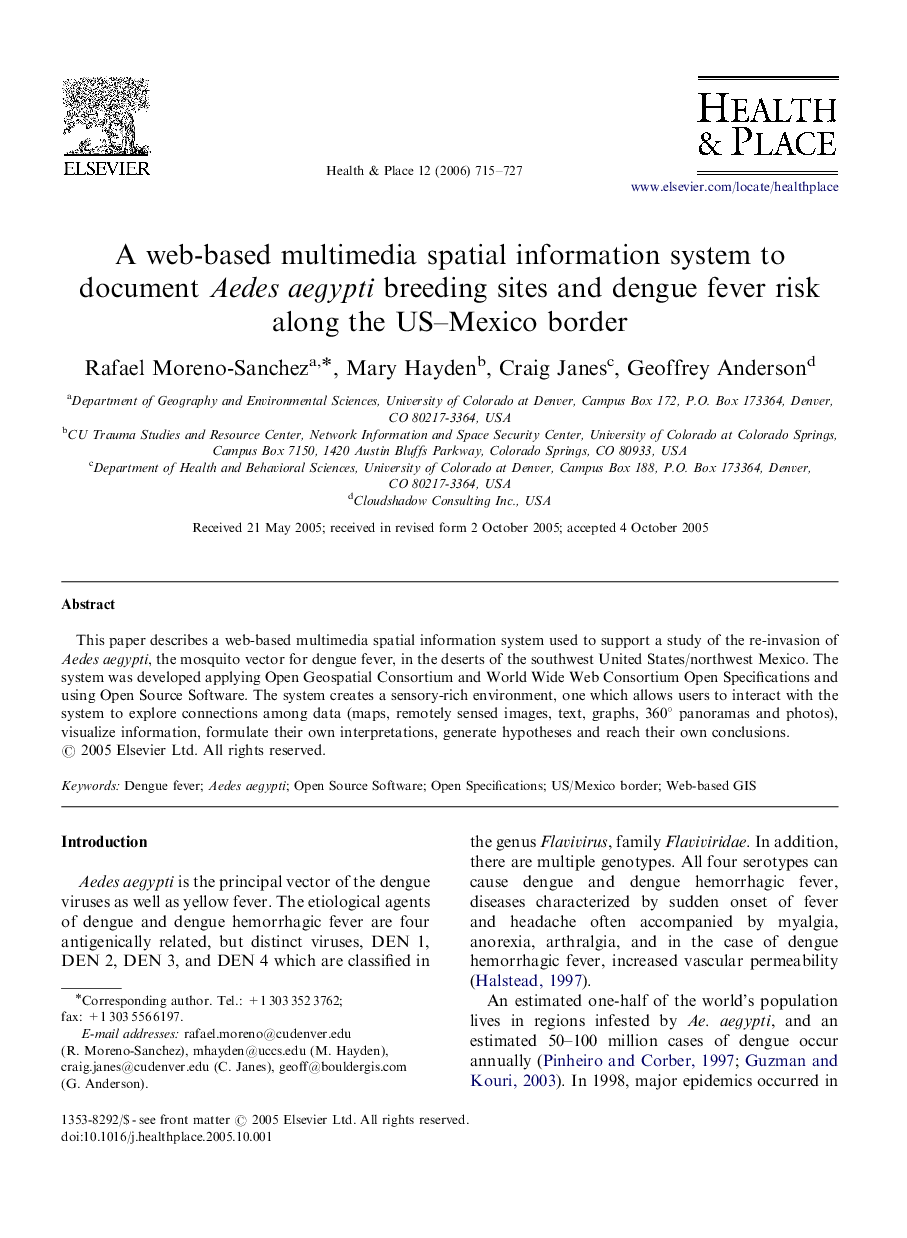| Article ID | Journal | Published Year | Pages | File Type |
|---|---|---|---|---|
| 1048993 | Health & Place | 2006 | 13 Pages |
Abstract
This paper describes a web-based multimedia spatial information system used to support a study of the re-invasion of Aedes aegypti, the mosquito vector for dengue fever, in the deserts of the southwest United States/northwest Mexico. The system was developed applying Open Geospatial Consortium and World Wide Web Consortium Open Specifications and using Open Source Software. The system creates a sensory-rich environment, one which allows users to interact with the system to explore connections among data (maps, remotely sensed images, text, graphs, 360° panoramas and photos), visualize information, formulate their own interpretations, generate hypotheses and reach their own conclusions.
Related Topics
Health Sciences
Medicine and Dentistry
Public Health and Health Policy
Authors
Rafael Moreno-Sanchez, Mary Hayden, Craig Janes, Geoffrey Anderson,
